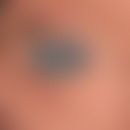Synonym(s)
HistoryThis section has been translated automatically.
Van Bogaert, 1948; Suenaga, 1952; Ichikawa and Hiraya, 1933;
DefinitionThis section has been translated automatically.
Rare, autosomal dominant inherited genodermatosis with diffuse hyperpigmentationg and spotty, speckled depigmentation of the entire integument without further organ symptoms (neurological disorders are described in a single case). Erroneously sometimes also called diffuse neurocutaneous melanosis.
You might also be interested in
Occurrence/EpidemiologyThis section has been translated automatically.
Mainly occurring in the Japanese population. Also described in Arab countries.
EtiopathogenesisThis section has been translated automatically.
Several mutations in the ABCB6 gene (ABCB6=ATB-binding cassette subfamily B, member 6) located on chromosome 6q24.2-q25.2 are described (Zhong W et al. 2019). ABCB6 mutations cause changes in the Golgi apparatus of melanocytes, which affects melanosome formation and melanosome transport. Another autosomal recessive inherited phenotypically largely identical but different genotype (OMIM 612715: chromsome 12q21.q23) has been described.
LocalizationThis section has been translated automatically.
ClinicThis section has been translated automatically.
Uniform dirty-grey-brown hyperpigmentation, spot-like depigmentation in the area of large skin folds, the axillae and the inguinal region. Follicular hyperkeratoses on the extensor sides of the extremities (Sardar SK et al. 2016). Leukonychie, koilonychie, thin hair.
HistologyThis section has been translated automatically.
Differential diagnosisThis section has been translated automatically.
TherapyThis section has been translated automatically.
Progression/forecastThis section has been translated automatically.
LiteratureThis section has been translated automatically.
- Al Hawsawi K et al (2002) Dyschromatosis universalis hereditaria: report of a case and review of the literature. Pediatr Dermatol 19: 523-526
- Elser I et al (2003) Dyschromatosis universalis hereditaria. An unusually rare clinical picture. Dermatol. 54: 368-370
- Sardar SK et al. (2016) Dyschromatosis universalis hereditaria: report of six cases from a family. Dermatol Online J 22(9).
- Sethuraman G et al (2000) Dyschromatosis universalis hereditaria: a unique disorder. Pediatr Dermatol 17: 70-72.
- Suenaga M (1952) Genetical studies on skin diseases. VII. dyschromatosis universalis hereditaria in five generations. Tohoku J Exp Med 55: 373-376
- Van Bogaert LC (1948) La mélanose neurocutanée diffuse hérédofamiliale. Bull Acad R Med Belg 3: 397-427.
- Zhong W et al (2019) Atypical presentation of dyschromatosis universalis hereditaria with a novel ABCB6 mutation.Clin Exp Dermatol 44:e58-e60.
- OMIM 127500
Incoming links (3)
Dyschromatosis universalis hereditaria; Melanosis, diffuse neurocutaneous; Reticular hyperpigmentations;Outgoing links (11)
Addison's disease; Ashy dermatosis; Epidermis; Gaucher's disease; Isotretinoin; Koilonychie; Leukonychie; Melanosis neurocutanea; Niemann-pick disease; Retinoids; ... Show allDisclaimer
Please ask your physician for a reliable diagnosis. This website is only meant as a reference.




